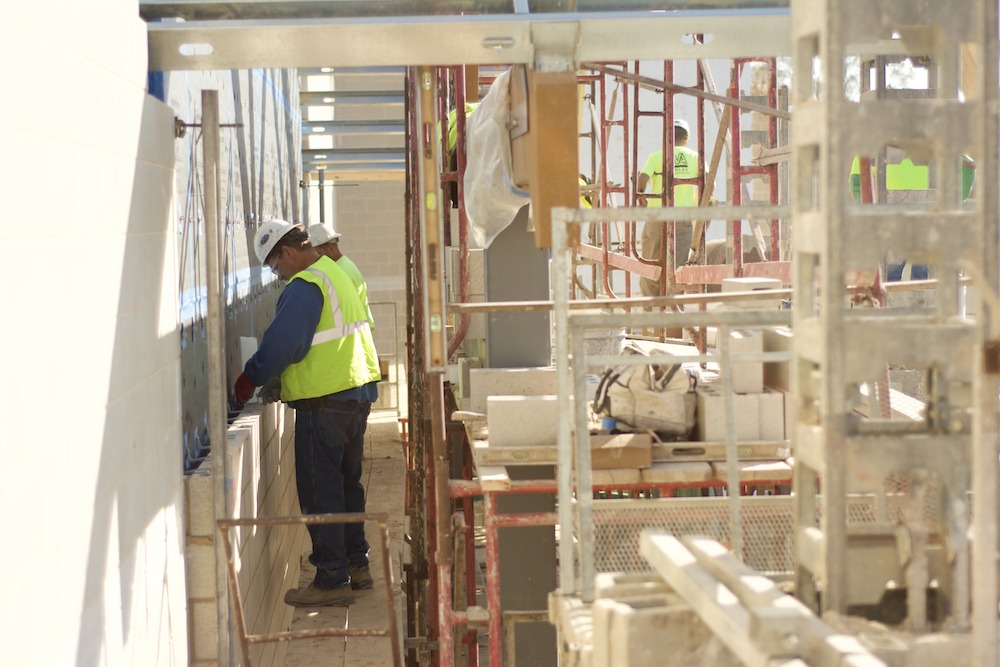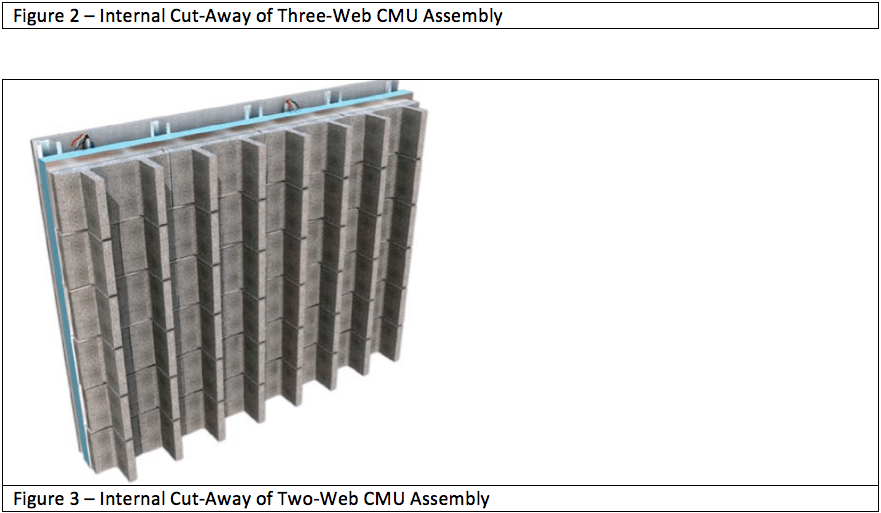Building codes are a strange combination of perceived confliction. In one respect they are constantly changing, forcing the collective construction industry to re-educate themselves under the new provisions every three years. This process is expensive and frustrating, leading to descriptors such as ‘change for change sake’. Yet they are concurrently perceived as being slow to react and resistant to the adoption of new technologies – and when those ‘significant’ changes are implemented, they are generally met with near hostility as designers, contractors, and owners alike struggle to understand why ‘the way things were’ no longer work.
I’m generally not a fan of change. Change implies that something is now different, an action not beholden to ‘making a difference’. I am however, a fan of innovation and evolution…and the potential for constructive changes embodied therein. Moreover, I acutely appreciate just how directly innovation (and by association, industry health) can be supported – and stifled – by building codes. A topic I covered in detail in the May, 2016 edition of Masonry Magazine by outlining my 5 rules of building codes:
Rule 1: No one knows everything in the building code – but you should understand your core area of responsibility.
Rule 2: Building codes and standards are complicated, but not all encompassing.
Rule 3: Building codes define minimum…and concurrently maximum…requirements.
Rule 4: Building codes are biased.
Rule 5: Building codes don’t just impact your markets; they define your market’s existence.
The May 2016 article was a broad reflection of the impact and importance of building codes. The following focuses much more specifically on tangible changes given that many states and jurisdictions around the U.S. have, or are in the process of adopting and implementing the 2015 edition of the International Building Code (IBC). So yes, things are changing…in a meaningful, positive direction. Here are several reasons to embrace these changes whether you produce concrete masonry, design with concrete masonry, or install concrete masonry.
Structural Efficiency
Much has been reported about the new unit strength table (Table 1) incorporated into the 2013 edition of TMS 602. No question this was a huge change, essentially increasing the baseline concrete masonry compressive strength by 33% over historical values.
This change alone would increase the design efficiency of many concrete masonry structures. Despite the significance of this change, it is only one of many revisions incorporated into TMS 402/602, Building Code Requirements and Specification for Masonry Structures, over the past several years that directly influence the efficiency of concrete masonry design. (Those interested in a detailed review of these revisions can read more in TMS Responds, Volume 10, Number 1 and Volume 11, Number 1.)
The simplest means of illustrating the impact of the unit strength table recalibration – coupled with other numerous updates and revisions reflected in the design provisions of TMS 402 – is shown in Table 2. These results summarize the vertical reinforcement requirements for an 18 foot tall, 8 inch CMU wall designed to carry a 25 lb/ft2 (allowable) and 40 lb/ft2 (strength) wind pressure and a 3,000 lb/ft applied axial dead load using the strength design provisions of TMS 402.
Certainly each project has its own unique set of design conditions that could increase or decrease reinforcement spacing from that shown in Table 2. Nevertheless, there are a couple key takeaways from this simple example:
- The amount of reinforcement required to safely resist design loads is decreasing, sometimes moderately, sometimes significantly. This translates not only in savings for reinforcement and grout, but increases in productivity, reduced congestion, shorter lap splice lengths, and so on.
- The recalibrated unit strength table wasn’t adopted until the 2015 IBC (e.g., the 2013 TMS 402/602); acknowledging that while this was a significant change, there were many other revisions reflected in the 2012 and 2015 IBC that contribute to the design efficiency of concrete masonry construction.
While the above analysis focuses on increasing the spacing of the reinforcement, an alternative approve can focus on decreasing the nominal thickness of the assembly where product conditions warrant. For example, concrete masonry assemblies that have historically been 12 in. CMU may now be 10 in. (or possibly 8 in.) while maintaining similar reinforcement spacing required by past codes. This option may be more beneficial in regions where solid grouting/closely spaced reinforcement is a common practice. Again, these examples illustrate possible scenarios as opposed to given rules, but certainly a reflection of the degree to which cost, material, and time savings can be realized.
Thermal Efficiency
The thermal design of concrete masonry assemblies has followed a simple model for several decades: heat flows through the webs and grouted cells of the assembly (Figure 1). Therefore, reducing the number of grouted cells (structural efficiency) and reducing the number or size of the webs, R-value increases of 30%, 80%, or even 200% can be easily achieved with single wythe construction; depending on the insulation type and location, unit density, and grout spacing.
Increasing the thermal efficiency of CMU construction was the primary driver behind the revisions to ASTM C90 implemented in 2011 that permit alternative CMU configurations such as single or double open-ended units, thinner webs, and reduced height webs. Consider the interior of a concrete masonry assembly constructed using three web units (Figure 2) versus the same assembly constructed using two web concrete masonry units (Figure 3). Not only as the number of thermal bridges (webs) reduced considerably, but the cells of the two web units greatly facilitate the placement of grout or foam insulation.
Maintaining the economic viability of loadbearing masonry construction rests largely on the ability of single wythe construction to comply with current energy codes – regardless of climate zone. These solutions do exist. If masonry projects in Fairbanks, Alaska can come up with solutions to comply with current energy codes using off-the-shelf concrete masonry technologies, I‘m confident more southern locations can as well.
Anecdotally, one of the largest challenges I see in the market related to energy code compliance isn’t implementing solutions to comply with energy codes, rather, our primary challenges include:
- Educating designers and decision makers on the available masonry technologies that facilitate energy code compliance. Unfortunately, many believe that continuous insulation is a requirement for complying with current energy codes. It is not.
- Internally as an industry evolving to meet these market changes and owner expectations. Solutions that worked in the 1990s may not work today. This isn’t a shortcoming of masonry as a construction material, rather an opportunity for the industry to engage with designers and implement masonry solutions.
Structural Bed Joint Reinforcement
Bed joint reinforcement has been an integral part of concrete masonry construction for decades, whether for tying wythes of composite masonry assemblies together, as part of a masonry veneer, or simply for crack control. Whether bed joint reinforcement can replace structural rebar, however, has remained a point of debate within code circles. Following much research and debate, this question has been (partially) answered – yes, bed joint reinforcement can be used as structural reinforcement (with conditions).
The importance of this change draws from a separate design criteria for reinforced masonry construction: specifically that the effective spacing of reinforcement cannot exceed 6 times the nominal wall thickness, nor 72 inches. This requirement is why, for example, the spacing of vertical reinforcement in an 8 inch wall is rarely spaced further apart than 48 inches (6 x 8 = 48 inches). The reason for this requirement is to prevent vertical reinforcement from being spaced too far apart, effectively creating sections of unreinforced masonry between reinforced sections.
By allowing bed joint reinforcement to be part of ‘primary’ reinforcement used to resist design loads, the vertical reinforcement can be spaced much further apart as the load is shared between the bed joint reinforcement and the vertical rebar. Referring back to Table 2, the CMU assembly designed to the 2015 IBC required No. 5 bars at 56 inches. If 9 gage bed joint reinforcement was also incorporated into this assembly at 16 inches on center, the spacing of the vertical reinforcement increases to 96 inches. By comparison back to the 2009 IBC, the spacing of the vertical reinforcement has more than doubled by simply taking advantage of the bed joint reinforcement as a structural component of the assembly.
Summary
Fully realized, the efficiencies afforded by the 2015 edition of the IBC can significantly reduce the cost, increase productivity, enhance thermal performance, and improve the viability of concrete masonry construction across multiple markets. The next edition of the TMS 402/602 won’t be published until 2022…and subsequently adopted into the 2024 IBC. This affords considerable time to acclimate to the changes of the 2015 IBC; and lots of time to put the next wave of changes, tools, and resources in place to continue the momentum. Stay tuned for the next evolution.
Jason Thompson is Vice President of Engineering at the National Concrete Masonry Association (NCMA) and Chair of the Masonry Alliance for Codes and Standards (MACS) whose mission is to advance and protect the masonry industry within the building codes arena. Jason can be reached at jthompson@ncma.org.
Words: Jason Thompson
Photos: Masonry Magazine






